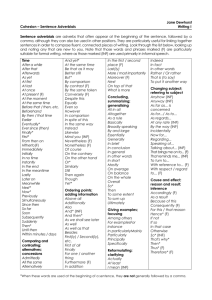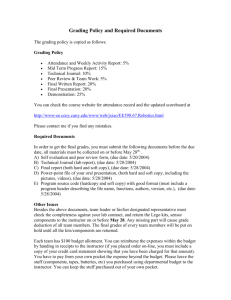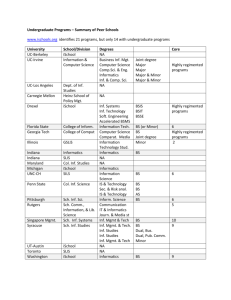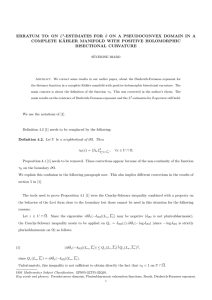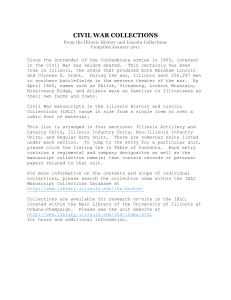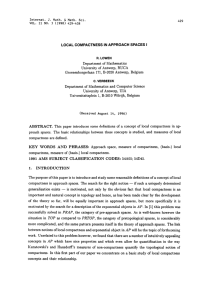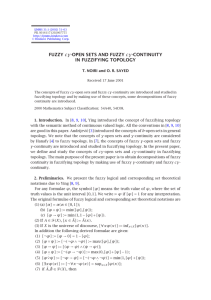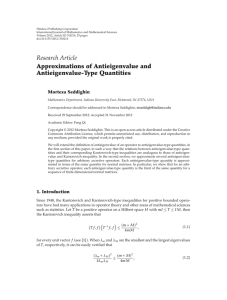Course Content Outline
advertisement
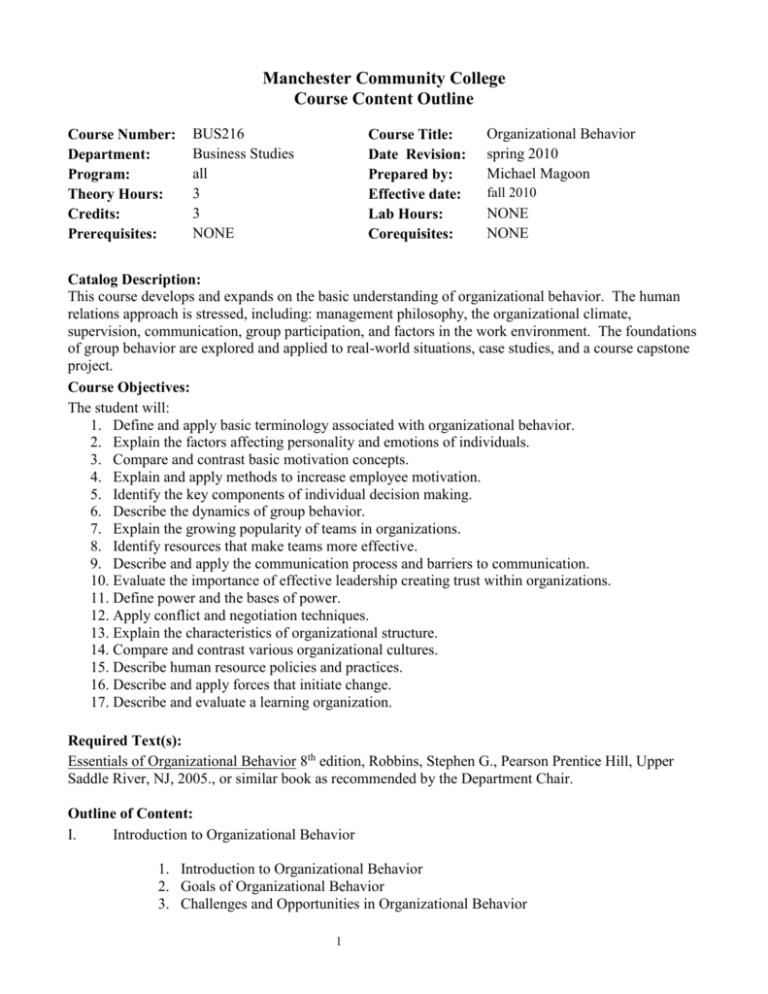
Manchester Community College Course Content Outline Course Number: Department: Program: Theory Hours: Credits: Prerequisites: BUS216 Business Studies all 3 3 NONE Course Title: Date Revision: Prepared by: Effective date: Lab Hours: Corequisites: Organizational Behavior spring 2010 Michael Magoon fall 2010 NONE NONE Catalog Description: This course develops and expands on the basic understanding of organizational behavior. The human relations approach is stressed, including: management philosophy, the organizational climate, supervision, communication, group participation, and factors in the work environment. The foundations of group behavior are explored and applied to real-world situations, case studies, and a course capstone project. Course Objectives: The student will: 1. Define and apply basic terminology associated with organizational behavior. 2. Explain the factors affecting personality and emotions of individuals. 3. Compare and contrast basic motivation concepts. 4. Explain and apply methods to increase employee motivation. 5. Identify the key components of individual decision making. 6. Describe the dynamics of group behavior. 7. Explain the growing popularity of teams in organizations. 8. Identify resources that make teams more effective. 9. Describe and apply the communication process and barriers to communication. 10. Evaluate the importance of effective leadership creating trust within organizations. 11. Define power and the bases of power. 12. Apply conflict and negotiation techniques. 13. Explain the characteristics of organizational structure. 14. Compare and contrast various organizational cultures. 15. Describe human resource policies and practices. 16. Describe and apply forces that initiate change. 17. Describe and evaluate a learning organization. Required Text(s): Essentials of Organizational Behavior 8th edition, Robbins, Stephen G., Pearson Prentice Hill, Upper Saddle River, NJ, 2005., or similar book as recommended by the Department Chair. Outline of Content: I. Introduction to Organizational Behavior 1. Introduction to Organizational Behavior 2. Goals of Organizational Behavior 3. Challenges and Opportunities in Organizational Behavior 1 II. The Individual in the Organization 1. 2. 3. 4. 5. III. Groups in the Organization 1. 2. 3. 4. 5. 6. IV. Foundations of Individual Behavior Personality and Emotions Basic Motivation Concepts Motivation Applications Individual Decision Making Foundations of Group Behavior Understanding work Teams Communication Leadership and Creating Trust Power and Politics Conflict and Negotiation The Organization System 1. 2. 3. 4. Foundations of Organizational Structure Organizational Culture Human Resource Policies and Practices Organizational Change and Development Required Methods of Assessment Assessment Method 1: Quizzes Performance Criteria: Students will demonstrate knowledge of course material through completion of quizzes. Scores are based upon traditional letter (A-F) or 100 point grading scale. Course Objective(s) Using this Method: 1-17. Assessment Method 2: Class Participation Performance Criteria: Students will demonstrate understanding of the subject matter by actively participating in classroom discussions and by supplying appropriate contributions. Students will also demonstrate effective listening skills by listening to other students’ comments and giving appropriate responses. Scores are based upon traditional letter (A-F) or 100 point grading scale. If needed, a class-participation grading rubric is available for the Business Studies Department. Course Objective(s) Using this Method: 1-17. Assessment Method 3: Examinations Performance Criteria: Students will demonstrate knowledge of the material through completion of examinations. Scores are based upon traditional letter (A-F) or 100 point grading scale. Course Objective(s) Using this Method: 1-17. Assessment Method 4: Projects Performance Criteria: Student will demonstrate his/her knowledge of the material through completion of projects. Score based upon traditional letter (A-F) or 100 point grading scale. Grading guideline will be outlined in the instructor’s syllabus. Grading guidelines should include a percentage weight 2 for the following: completeness, accuracy, neatness, presentation, effort and any other criteria the instructor feels is appropriate. Course Objective(s) Using this Method: (Note, it is not necessary to test every one of these objectives in a project. Instructor preference dictates the objectives selected.): 1-17 (as applicable). Cognitive Levels 1. Cognitive Levels met by course (should be reflected in objectives and assessments): I = Introduced E = Emphasized A = Comprehensive Assessment Knowledge Comprehension Application Objectives 1. E, A E, A E, A 2. E, A E, A E, A 3. E, A E, A E, A 4. E, A E, A E, INF 5. E, A E, A E, A 6. E, A E, A E, A 7. E, A E, A E, A 8. I, A I, A E, A 9. E, A E, A E, A 10. E, A E, A E, A 11. I, A I, A I, INF 12. E, A E, A E, INF 13. I, A I, A I, A 14. E, A E, A E, A 15. I, A I, A 16. E, A E, A E, A 17. E, A E, A E, A Core Attributes 2. Core Attributes met by course (college wide) I = Introduced E = Emphasized Human Relationship Skills A = Comprehensive Assessment Communication Skills Critical Thinking Global Perspecti ves E, A I, A E, A E, A E, A E, A E, A I, A E, A E, A I, A E, A E, A I, A E, A E, A E, A E, A E, A E, A E, A E, A E, A E, A E, A I, A E, A E, INF E, A E, A E, A I, A E, A E, A I, A E, A INF = Informally Assessed Analysis Synthesis Evaluation E, A E, A E, INF E, A E, A E, A E, A E, A E, INF I, A E, A I, A E, A E, A E, A E, A E, A E, A E, A E, INF E, A E, A E, A E, A INF = Informally Assessed Quantitative Reasoning Scientific Processes Technical Skills Study Skills OBJECTIVES 1. 2. 3. 4. 5. 6. 7. 8. 9. 10. 11. 12. E, A I, A E, A E, A E, A E, A E, A I, A E, A E, A I, A E, A 3 E, A I, A E, A E, A E, A E, A E, A I, A E, A E, A I, A E, A E, A E, A 13. 14. 15. 16. 17. I, A E, A I, A E, A E, A I, A E, A I, A E, A E, A I, A E, A I, A E, A E, A I, A E, A I, A E, A E, A 4 I, A I, A I,A E, A E, A E, A E, INF



